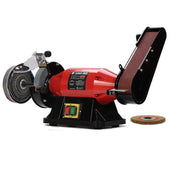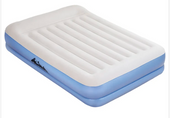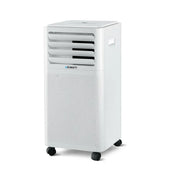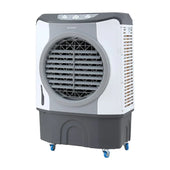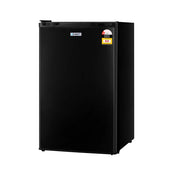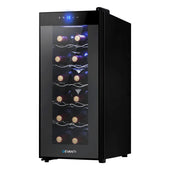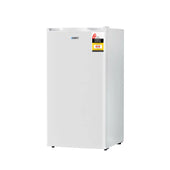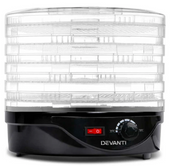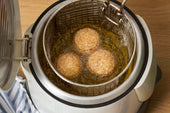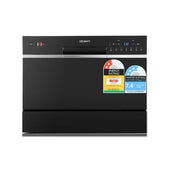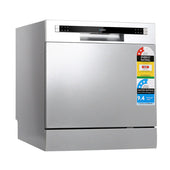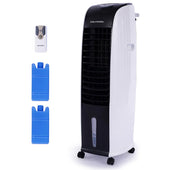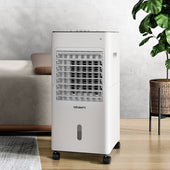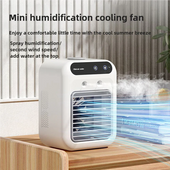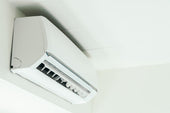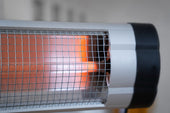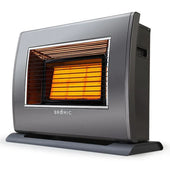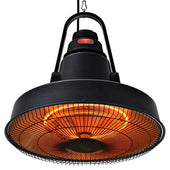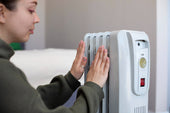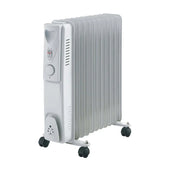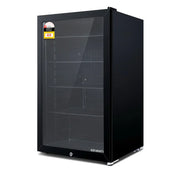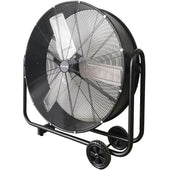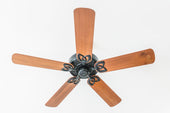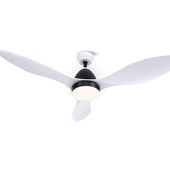Introduction to Air Fryers: What They Are and How They Work
Air fryers are countertop kitchen appliances designed to mimic the results of deep frying but with significantly less oil. At their core, they utilise a process known as rapid air technology, which circulates hot air around the food at high speeds. This creates a crispy layer on the outside while cooking the interior evenly.
Key components of an air fryer include:
- Heating Element: Produces high heat to cook food.
- Fan: Circulates hot air swiftly within the chamber.
- Basket or Tray: Holds food, allowing air to surround it.
The combination of intense heat and air circulation ensures dishes are cooked quickly and with minimal oil, offering a healthier alternative to traditional frying.
The Evolution of Cooking Technology: Where Air Fryers Fit In
The journey of cooking technology has consistently aimed at enhancing convenience, efficiency, and flavour preservation. Early methods relied on open flames, which then evolved into ovens, stovetops, microwaves, and more intricate electrical appliances. These innovations reflected society’s shifting priorities, from speed to health-consciousness. During days, the rise of the convection oven in the 20th century marked a significant shift, utilising circulated hot air for faster and more even cooking.
Air fryers take this concept further by employing high-speed air circulation to replicate deep frying. This technology caters to modern consumer demands for reduced oil use, healthier meals, and quicker meal preparation without compromising taste or texture.
Breaking Down the Science: How Air Fryers Produce Crispy Textures
Air fryers achieve crispiness by circulating hot air at high speeds around the food. This process, known as convection, ensures even heat distribution, which is key to mimicking the surface reaction that traditionally occurs during deep frying. The high heat triggers the Maillard reaction—where proteins and sugars in the food interact, creating browning and enhancing flavour.
The small chamber of an air fryer intensifies heat concentration, enabling faster cooking. A perforated basket exposes more surface area to the circulating air, allowing moisture to evaporate quickly. This dehydration step is crucial in achieving the dry, crunchy exterior while retaining a moist interior.
The Role of Convection: Harnessing Hot Air for Frying
Air fryers employ convection heating, a process that uses rapidly circulating hot air to cook food. At the core of this technology is a heating element and a powerful fan that work together to distribute heat evenly around the food. This circulation mimics the frying process by creating a Maillard reaction, which is responsible for the browning and crisping.
Key factors enhancing this process include:
- High-speed air circulation, ensuring consistent heat distribution.
- Compact cooking chambers, which amplify heat impact.
- Preheating mechanisms, which shorten cooking times.
This convection process eliminates the need for excessive oil while maintaining the texture traditionally associated with fried foods.
Little Oil, Big Results: Understanding Oil Efficiency in Air Frying
Air fryers utilise advanced rapid air circulation technology that ensures consistent cooking with significantly reduced oil usage. Unlike traditional frying, where food is submerged in oil, air fryers require only a light mist or a few drops to ensure crispness. The combination of hot air and minimal oil coats food effectively, mimicking the texture achieved in deep frying.
This process allows oil to penetrate the food surface efficiently, creating golden, crunchy exteriors while keeping the inside tender. The reduced oil quantity not only contributes to healthier meals but also eliminates the residual greasiness often left behind by conventional frying methods.
Comparing Air Fryers to Traditional Deep Frying: Health and Taste Benefits
Air fryers and traditional deep fryers differ significantly in how they cook food, particularly in their health impact and taste outcomes.
Health Benefits
- Reduced Oil Usage: Air fryers use minimal oil, often requiring just a tablespoon or less, lowering calorie and fat content. In contrast, deep fryers fully submerge food in oil.
- Lesser Acrylamide Formation: Studies indicate that air frying produces fewer harmful compounds, such as acrylamide, compared to deep frying.
- Lower Cholesterol Risks: With less oil absorption, air-fried foods may promote better heart health.
Taste Differences
- Crispy Texture: Air fryers replicate crispiness using rapid hot air while limiting greasiness.
- Moisture Levels: Foods retain more natural moisture in an air fryer, though deep frying delivers a distinctised “fried” flavour many associate with indulgence.
Exploring Versatility: Beyond Chips – Other Foods You Can Cook in an Air Fryer
Air fryers have redefined cooking by accommodating a variety of foods beyond traditional chips. This versatility makes them suitable for baking, roasting, and more. Proteins such as chicken wings, fish fillets, and even tofu can achieve a crispy, golden texture with minimal oil. Vegetables such as cauliflower, courgettes, and sweet potatoes roast beautifully, preserving their natural flavours.
Air fryers can also handle baked goods. Items like muffins, cinnamon rolls, and scones cook evenly, making them a quick alternative to traditional ovens. Additionally, reheating leftovers becomes more efficient and retains their freshness without sogginess caused by microwaves.
Energy Efficiency: How Air Fryers Save Power Compared to Ovens
Air fryers are designed to use energy more efficiently than traditional ovens due to their compact size and rapid heating capabilities. Unlike ovens, which must preheat a large cavity, air fryers heat a smaller cooking chamber almost instantly. This reduces energy consumption significantly. Additionally, air fryers circulate hot air through high-speed fans, ensuring heat is evenly distributed, thus cooking food faster than an oven.
Key factors contributing to energy efficiency include:
- Reduced cooking times: Air fryers can cook meals up to 25-50% faster.
- Lower wattage usage: They generally operate at 1,200–2,000 watts compared to ovens' 2,500+ watts.
- Minimised heat loss: Small, enclosed chambers retain heat better than large oven spaces.
Common Myths About Air Fryers Debunked
Air fryers have gained popularity quickly, but with their rise have come several misconceptions. Debunking these myths helps consumers understand their true capabilities and limits.
Myth 1: Air fryers are the same as deep fryers
An air fryer uses hot air and minimal oil, whereas a deep fryer submerges food in oil. While both create crisp textures, air frying is healthier and relies on air circulation rather than oil immersion.
Myth 2: Air fryers don’t actually fry food
This myth stems from the absence of oil; however, air fryers replicate frying by utilising rapid air movement to crisp the surface of food, delivering similar results to traditional frying.
Myth 3: Air fryers can be used only for potatoes and frozen snacks
Air fryers are versatile appliances that can roast vegetables, bake desserts, grill meats, and more. Their adjustable temperature and timer settings cater to a wide variety of recipes.
What to Look for When Buying an Air Fryer: Key Features Explained
When selecting an air fryer, several factors determine its suitability for specific needs:
- Capacity: Match the size of the fryer to your household. Smaller units (2-3 litres) suit individuals or couples, while larger models (over 5 litres) accommodate families.
- Power: Wattage impacts cooking efficiency. Higher wattage often means faster cooking but requires compatible electrical outlets.
- Temperature Range: Versatile fryers with wide temperature settings handle various cooking functions, from baking to grilling.
- Preset Programmes: Built-in presets simplify cooking for specific dishes like chips or chicken wings.
- Accessories: Removable trays, racks, or skewers enhance functionality but check for dishwasher-safe options.
- Control Type: Digital controls often offer precision, while manual dials provide simplicity.
- Design & Storage: Opt for compact models if counter space is limited.
Considering these elements ensures a practical, efficient selection.
Tips and Tricks for Perfect Results with Air Frying
Choose the Right Temperature and Time
- Adjust temperature and cook times based on the food type; smaller foods require less time.
- Preheat the air fryer before adding ingredients for consistent cooking.
Avoid Overcrowding
- Arrange food in a single layer to ensure airflow reaches every piece.
- Cook in batches if necessary to keep surfaces crispy.
Lightly Coat Food with Oil
- Use spray or a brush for even oil coverage; excess oil diminishes crispness.
- Opt for oils with high smoke points like avocado or sunflower oil.
Shake or Flip Halfway Through
- Toss or turn food during cooking to ensure even browning.
- Monitor cooking progress for desired crispness.
Experiment with Seasoning
- Add spices before cooking for bold flavour or after for a finishing touch.
- Marinate proteins beforehand for enhanced taste.
Environmental Impact: Can Air Fryers Be a Sustainable Choice?
Air fryers, compared to traditional cooking methods, boast lower energy consumption due to their compact size and efficient heat circulation. They require less cooking time than ovens, thereby reducing electricity use. Moreover, because air fryers use minimal or no oil, they decrease reliance on cooking oils, which carry their own environmental footprint, including water use and deforestation tied to palm oil production.
Their longevity is another factor; durable air fryer designs help minimise electronic waste compared to short-lived appliances. However, materials used, such as plastics and non-stick coatings, can have ecological drawbacks. Thus, sustainable disposal options remain crucial for reducing environmental harm.
Cleaning and Maintenance: Keeping Your Air Fryer in Top Shape
Proper cleaning and maintenance are crucial for ensuring an air fryer functions efficiently and lasts longer. After each use, allow the device to cool completely before cleaning. Remove the basket, tray, or pan and wash them in warm, soapy water to remove grease and food residues. For dishwasher-safe parts, consult the manufacturer’s instructions.
Regularly wipe the interiors with a damp cloth and mild detergent, avoiding abrasive tools that may damage the non-stick coating. To prevent odours or grease build-up, clean the heating element gently using a soft brush. Ensuring thorough drying after cleaning prevents mould or rust.
Conclusion: Why Air Fryers Are Revolutionising Home Cooking
Air fryers have transformed food preparation by combining health benefits with culinary efficiency. Their rapid air circulation technology ensures even cooking while drastically reducing the need for oil. This allows for meals that are both crispy and significantly lower in fat.
Users appreciate their versatility, as they can air-fry, roast, bake, and grill with a single appliance. The compact design makes them ideal for modern kitchens, saving space and reducing clutter. Additionally, air fryers simplify clean-up, given their non-stick surfaces and dishwasher-safe components. These features collectively address contemporary demands for healthier, faster, and more convenient cooking methods.


